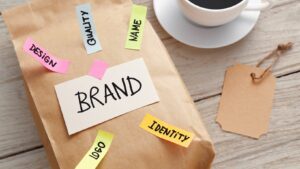In today’s competitive market, a strong brand identity isn’t just a luxury—it’s a necessity. A well-crafted brand design package can set a business apart from its competitors, creating a lasting impression on customers. This comprehensive package typically includes everything from logos and color schemes to typography and brand guidelines, ensuring consistency across all marketing materials.
By investing in a cohesive brand design package, businesses can not only enhance their visual appeal but also build trust and loyalty with their audience. Whether you’re a startup looking to make a mark or an established company aiming to refresh your image, understanding the elements and benefits of a brand design package is crucial for long-term success.
Brand Design Package
A brand design package is a comprehensive set of visual elements that represents a company’s identity. It ensures consistency across all marketing materials and customer touchpoints. Key components include:

- Logo: The primary visual symbol of the brand, often used on products, websites, and promotional materials.
- Color Schemes: Pre-defined colors that reflect the brand’s personality and appeal to the target audience.
- Typography: Specific fonts selected for use in various brand communications, ensuring a uniform look.
- Brand Guidelines: Detailed instructions on how to use brand elements correctly, including dos and don’ts for maintaining visual consistency.
A strong brand design package helps businesses distinguish themselves from competitors, enhancing visual appeal and fostering trust among customers.
Key Elements Of A Brand Design Package

A well-crafted brand design package is essential for establishing a strong and consistent brand identity. It includes several critical components that work together to create a cohesive visual representation of a company. A logo serves as the primary visual symbol of a brand. It provides instant recognition and represents the company’s core values and mission. A professional logo combines unique shapes, colors, and typography to create an impactful mark. For example, Nike’s swoosh or Apple’s apple icon are easily identifiable logos known worldwide.
A color palette reflects a brand’s personality and evokes specific emotions. It consists of primary, secondary, and accent colors used consistently across all marketing materials. A well-chosen color palette ensures that every visual element aligns with the brand’s identity. For instance, Coca-Cola’s use of red conveys excitement and energy, making it memorable.
Typography
Typography plays a critical role in consistent communication. It involves selecting specific fonts and typefaces that reflect the brand’s tone and style. Consistent typography across websites, brochures, and social media strengthens brand recognition. For example, Google’s use of the Product Sans typeface maintains uniformity across its digital platforms.Brand guidelines provide instructions for proper usage of visual elements. They ensure that the logo, color palette, and typography are applied consistently in all contexts. These guidelines include detailed specifications and examples of acceptable and unacceptable uses. Implementing comprehensive brand guidelines prevents misrepresentation and maintains brand integrity.
Choosing The Right Brand Design Package
Selecting the perfect brand design package ensures your business’s aesthetic aligns with its core values and goals.
Analyze potential design packages by thoroughly researching available options. Compare their components by examining elements like logos, color schemes, typography, and brand guidelines. Assess the quality by reviewing portfolios and examining past work examples. Consider different packages by evaluating their offerings—for instance, some may provide additional services like social media graphics or packaging designs. Ensure alignment with your brand’s vision by comparing specifics like styles and approaches.
Testimonials And Reviews
Evaluate design packages by reading testimonials and reviews from previous clients. Firsthand experiences offer insights into the quality of work and customer satisfaction. Look for patterns in feedback—for example, consistently positive comments about communication and delivery times indicate reliability. Use reviews to gauge overall satisfaction and effectiveness, helping to narrow down choices to those with the best track records. Real client feedback often highlights strengths and potential drawbacks of a design package.


